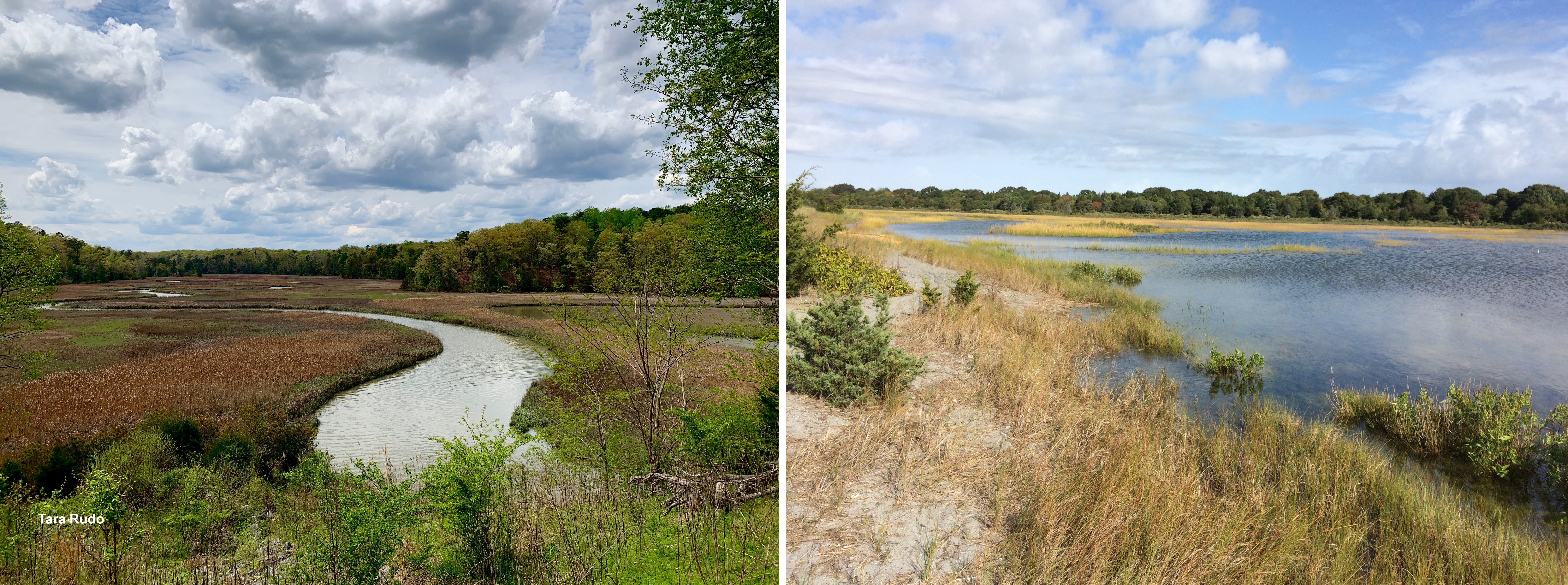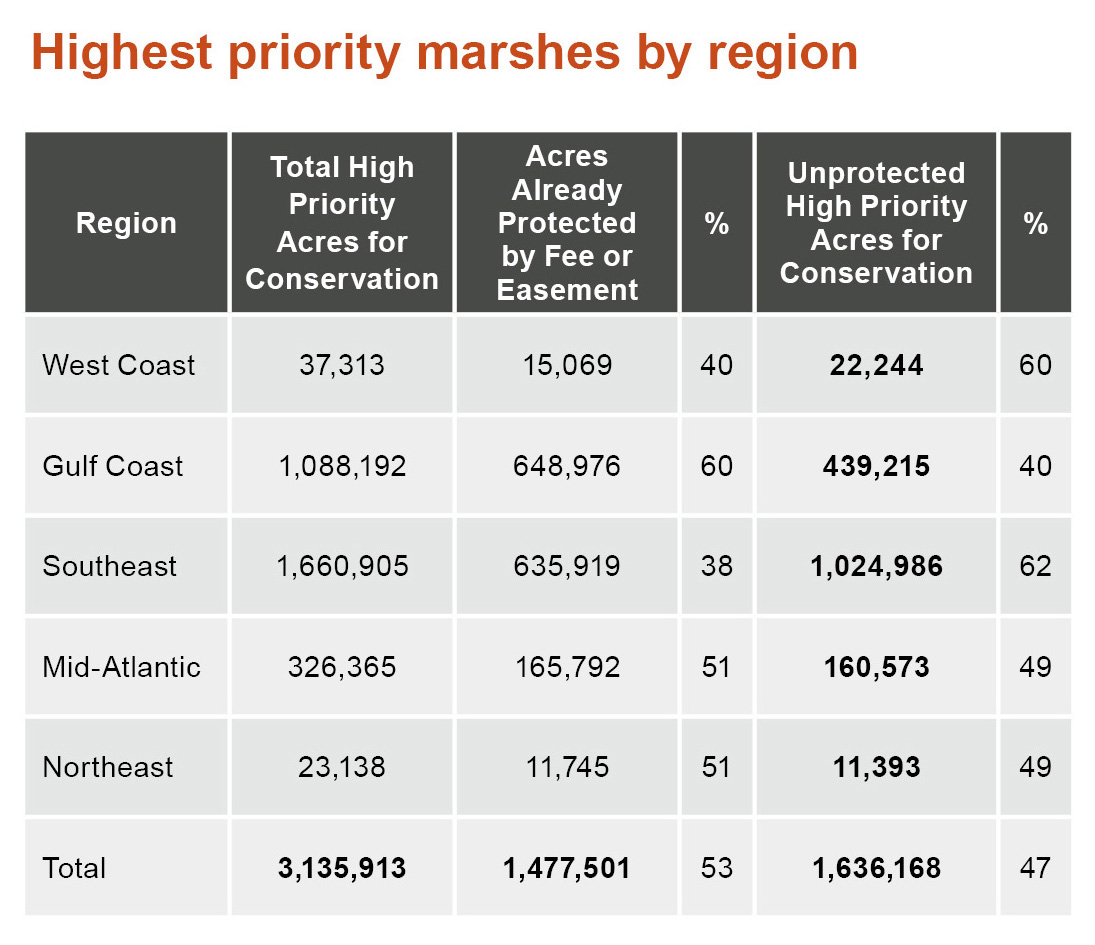Rating Marsh Resilience
The Takeaway: This natural resource continues to decline. To help prioritize conservation efforts, a study by the National Estuarine Research Reserve System projects marsh survival rates.

A healthy tidal marsh, with its ability to absorb excess water, helps protect communities from flooding, keeps water supplies cleaner, and provides important natural habitat. But marshlands face many threats, including sea level rise.
A recent four-year study undertaken by NOAA’s partnership program, the National Estuarine Research Reserve System, ranks marsh resilience—the ability to persist in place or migrate to another location as sea levels rise. Communities can use the information provided as an initial screening tool and a means of helping officials be more strategic in regards to marsh conservation and restoration projects. The study provides the details, and this interactive NOAA webpage shows how specific marsh areas are rated.
Annual Losses: Nearly 80,000 acres of U.S. coastal wetlands are lost annually to development, draining, erosion, and sinkage. That’s close to seven football fields every hour. Sea level rise presents yet another challenge.
Sea Level Rise Impacts: This study found that in the continental United States, 17.5 percent (15,962,202 acres) of coastal wetlands are not likely to survive. But 22,578,782 acres (approximately 22 percent) are in good condition and able to migrate landward, making them high priorities for conservation efforts.
Study Results
Marsh resilience was rated on a scale of one to 10, using 13 GIS-based metrics that include current marsh conditions, vulnerability to sea level rise, and adaptive capacity. Southeastern marshlands, and those along the Gulf of America, were found to be the most resilient. Marshes in the Northeast were found to be the least resilient. The study also identified undeveloped land in each region that has the capacity to support healthy tidal marshes as they migrate landward.
The study also makes recommendations for management options. For example, a marsh area ranked as highly resilient is a strong candidate for protection. Marshes vulnerable to sea level rise, but in good condition and with a high adaptation potential, are likely candidates for restoration efforts. Those in poor condition, with nowhere to migrate as sea levels rise, may be too expensive to save.
“Different factors contribute to the resilience of each region’s marshes,” says Rachel Stevens, lead author of the study and stewardship coordinator at New Hampshire’s Great Bay National Estuarine Research Reserve. “The presence of large, unfragmented stretches of marsh contributes to their general resilience in the Gulf of America, while in the Southeast, resilience is supported by the connectivity of the region’s large marshes. This, along with the lower development density and flat topography, can facilitate future migration of the marsh landward.”

Application
“This study helps communities prioritize project investments, including those made through the federal Bipartisan Infrastructure Law, to ensure all efforts are strategic and provide the greatest impact,” says Dr. Jeff Payne, director of NOAA’s Office for Coastal Management. “As a nation, we have a narrowing window of opportunity to protect these areas. The time to invest in marsh resources is now.”
The study provides a strong foundation for states and coastal communities to access the information needed to meet local priorities. To make this study more actionable for New Hampshire, for example, a local team used NOAA’s land cover data and locally relevant metrics, such as the presence of invasive species, to make parcel-level decisions.
“This information helped us work with communities to compare the feasibility and likely success of different marsh restoration and conservation projects,” says Cory Riley, manager of New Hampshire’s Great Bay National Estuarine Research Reserve. “Now we have a more comprehensive marsh management plan for Great Bay that is guiding plans for specific restoration projects and proposals for land protection grants to help marshes thrive.
“Because New Hampshire’s coastal zone management program has been an integral part of this work, we have a new reporting process for tidal wetland projects that complements the bay’s marsh management plan. We all understand where the opportunities are and what it will take to leverage them.”
Additional information can be found here
Partners: National Estuarine Research Reserve System; NOAA Office for Coastal Management; National Estuarine Research Reserve Association
PRINT